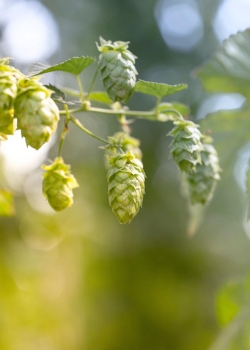Early Bird Deadline
30 November 2025
Judging
Date
23 March 2026
Winners Announcement
22 April 2026
30 November 2025
23 March 2026
22 April 2026

The 2nd Edition of the London Beer Competition, the only competition that judges quality alongside packaging and value, confirms that beer continues to drive quality, packaging and value.
With 35 styles judged, it also underlines the diversity of the beers available today, whilst the 124 medal awards reinforce the fact that the beer movement is championing the consumer experience around the world.
Feature Beer Jubel Urban Lager – Silver Medal Winner they say
“ The earth is pretty key – it’s the only planet that has beer. That’s why our bottle labels are plastic-free and we’re committed to offsetting the carbon emissions from each beer we make’
Producing beer is a resource-intensive business, one that not only uses a lot of water, but energy as well, and it also generates a considerable amount of waste product. One of the issues, perhaps, is there are no laws, nor any industry standards, that are designed to protect the environment when it comes to brewing. However, attitudes are changing as the world comes to terms with the impact we’re all having on our planet, with breweries playing their part in adopting procedures that not only minimise the negative effects but actually make a positive contribution to the environment.
This can make sense on several levels, not only in direct economic terms, with lower production costs, but by being seen to give something back to the environment and society, breweries can create marketing benefits by differentiating themselves from their competitors (even going so far as to support environmental projects around the world).
“Water, water everywhere, nor any drop to drink…”: seemingly we have lots of the stuff, and possibly because in the past it’s generally been considered to be so plentiful in our developed part of our blue and watery planet, it’s been taken for granted. However, inadequate water supplies are already a serious concern in many countries and this is likely to become more of an issue in Europe over the next 30 years, even in the UK, through a mix of climate change, rising pollution, population growth, increased human demand and overuse.
It takes a lot of water to brew beer. Today, many brewers are working hard to get the ratio down to a more sustainable level, below 5:1, even to 3:1, from previous highs of 10:1, with some breweries, also working with suppliers to reduce the water used in growing and producing the ingredients that go into beer production, for example by sourcing different, longer rooted grain varietals which require less ploughing and irrigation. And it’s certainly encouraging to read about big brewers in the USA and Australia reducing water consumption by, in one case, an astonishing 800%.
Recycling water has been one solution, with breweries sending used water to willow beds, ponds and lagoons where it can be filtered and cleaned and then pumped back into the brewery and re-used. Not only can this be seen as a positive contribution to Nature and the environment, creating a haven for wildlife, but it can also make economic sense with lower water bills, certainly when it comes to the medium to long term.
Science and technology can play a part in lowering water usage, too: brewing is a lot about heating and cooling, but there are systems which use the steam generated when boiling in the kettle to then heat water for mashing in the next brew, not only reducing the amount of water used, but also the energy consumed; cleaning equipment is very much part of the brewing process and so-called smart cleaning systems can save water by stopping the process once the pH level tests neutral; it’s the same with food grade chemical cleaners which don’t foam, break down harmlessly and require minimal rinsing.
It’s not only water consumption that can be seen as an issue but wastewater disposal too. Today we see waste brewery water being used to irrigate crops with the added benefit that this water can be high in biodegradables and nitrogen which acts as a fertilizer.
It’s not just about reducing overall energy requirements in the brewing process but changing operations and processes. Ways of achieving this include adopting renewable energy, either self-generated on-site with wind or solar, or buying such energy sourced from the grid. Energy savings can also be made by sourcing ingredients more locally, using non-fossil fuels with wood from managed sources, or biomass fuels, or heat recovery and re-use systems in the production processes. At the same time, of course, this has the benefit of reducing a company’s carbon footprint and CO2 emissions.
Buildings play a part, too, with less need for electric climate control through better insulation, and adopting natural materials and better design. LEED (Leadership in Energy and Environmental Design) is the world’s most widely used green building rating system, covering design, construction, maintenance and operations, and provides a framework to create healthy, highly efficient and cost-saving green buildings. The Guinness Brewhouse No.4 in Dublin is an example of such a building.
Step by step: from the ring pull, often lost to recycling and consigned to landfill, to the easily recyclable push tab can (aluminium cans are infinitely recyclable, even in as little as 60 days from a fill)… now the environmentally damaging plastic rings on six packs are being replaced by dots of glue or biodegradable rings (made from wheat and barley left over from the brewing process)… recyclable glass bottles are now available with a longer lifespan… work is underway on developing a biodegradable beer bottle made from responsibly-sourced wood fibre… there have been more introductions of biodegradable cardboard… and packaging with a higher recycled content… together with the use of environmentally-friendly printing inks… using paperboard rather than corrugated… and thinner casings… and the actual removal of as much plastic as possible from all packaging. It’s not so much about waste management, but waste avoidance.

Notwithstanding bottle return schemes and the use of fewer bottles by breweries adopting takeaway growlers, cans are intrinsically smaller than bottles and can weigh nearly 20 times less than a glass bottle of the same capacity, with pallets weighing some 40% less for the same volume of beer and allowing a greater volume to being transported for the same cost.
Yet it’s not just packaging that is leading us to a more sustainable brewing future but re-using spent hops and grains to create an animal feed, or, with help from some new science, turning leftover grains into a liquid nutrient that actually grows beer yeast. Some used grains are also being used to mill high protein, high fibre flour – and, in this new future landscape, brewers are also using bread to make beer.
Not only does thinking about sustainability make huge sense when we pause to think about the future health of our small planet – lest we forget, it’s the only home we have – but it makes business sense with consumers more and more interested in sustainable provenance.
Let’s raise a glass of beer to that thought.
 The article is contributed by Alistair Morrell, Wine Inspector, wine industry consultant, journalist and, commentator. Over 30 years as a wine business professional, Alistair shares his global knowledge, network, and experience of growers, importers, distributors and buyers.
The article is contributed by Alistair Morrell, Wine Inspector, wine industry consultant, journalist and, commentator. Over 30 years as a wine business professional, Alistair shares his global knowledge, network, and experience of growers, importers, distributors and buyers.
Show your beers where it matters. Get your products tasted by top buyers and experts at the London Competitions — enter now.